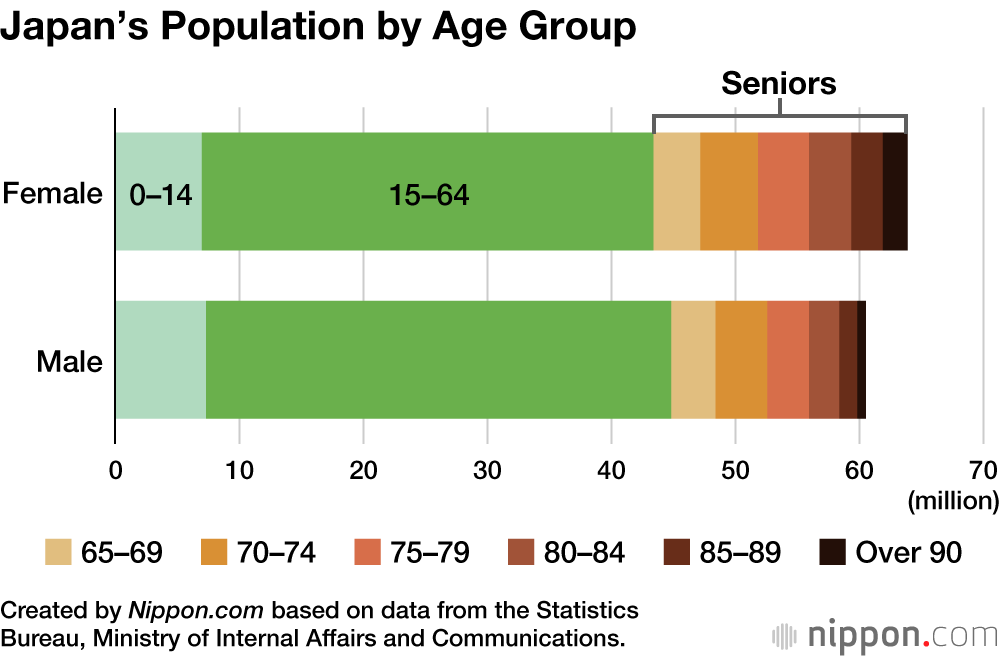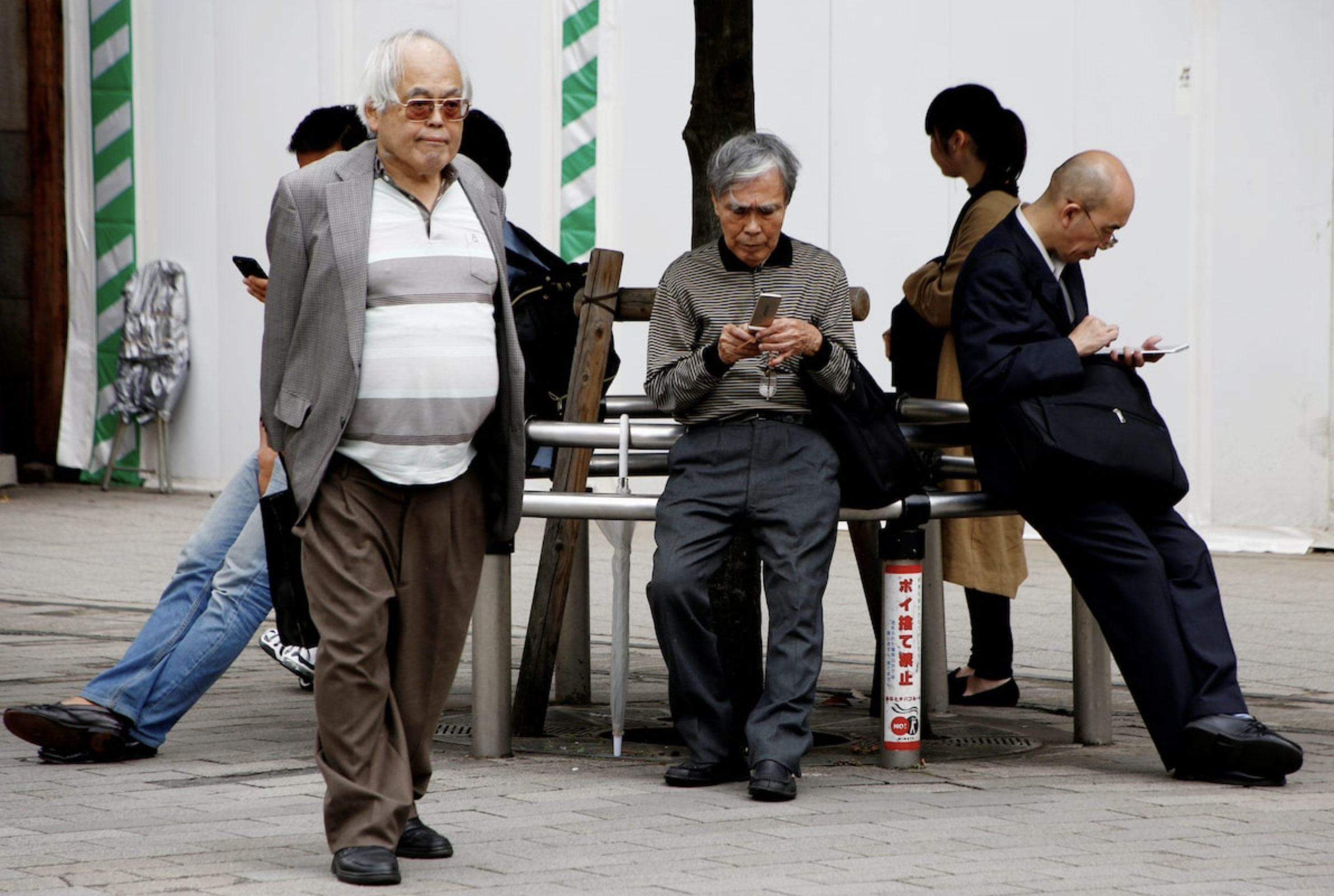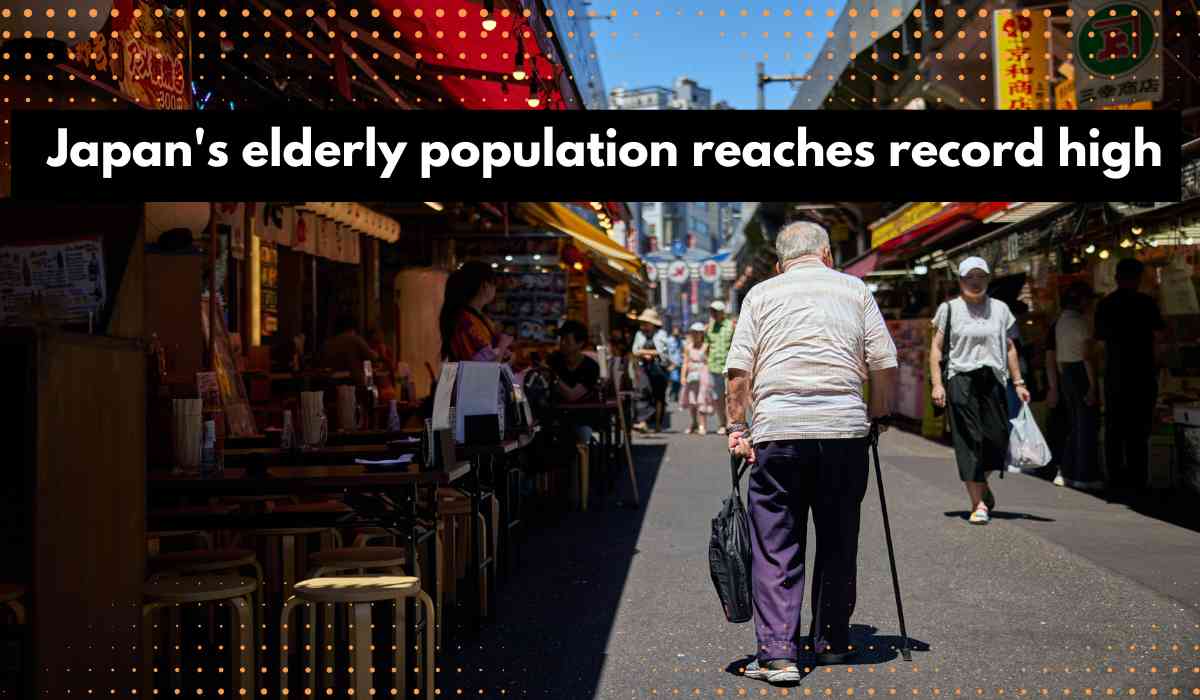The elderly population in Japan now counts to more than 36.25 million, which figures out to be 29.3% of the entire population of the country. Figures were released by the Ministry of Internal Affairs and Communications in Japan as a country that increasingly contends with the worsening population crisis - undoubtedly with strongly significant implications for both the economy, health care, and the social system. Actually, the report underscores the truth that 20.53 million women, which represents 32.3% of the total female population, are aged and above 65 years old. Conversely, male elderly is at 15.72 million, representing 26.1% of the male population. This ageing proportion of the senior citizens earns Japan a place that boasts of the highest proportion of elderly people around the globe and surpasses most European countries like Italy, Germany, and Portugal, who also have the same ageing population complications.

Impact on work force and economy
The declining and aging population of Japan has resulted in severe workforce shortages with serious implications on its pension and social security systems. Yet, despite this challenge, a record 9.14 million elderly citizens were recorded to be employed during 2023 and thus represented 13.5% of the nation's workforce. It means that one in seven Japanese workers is over the age of 65 years, reflecting a trend of prolonged working lives due to economic necessity. On the other hand, however, this resulted in a lopsided ratio of elderly workers. The nation witnessed slow growth in productivity since the older employees lacked physical capacity and technology skills as compared to the young ones. Health care and retirement cost for the various businesses is on the increase, thus straining the corporate profit level and government budget.

Increasing Healthcare and Welfare Costs
The rapid increase in the elderly population directly translates into an ever-rising medical and welfare cost. The healthcare sector of Japan struggles to sustain available services especially suited for elderly care-from long-term care to healing age-related conditions such as dementia. Despite government initiatives and increasing programs on home healthcare and elder care facilities, they have not yet been adequate enough to satisfy the rising need. Discussions have also been prompted by the soaring costs to ask whether the government should increase taxes to fund the growing health care, hence piling more misery on the working people who are increasingly of younger ages. As the dependency ratio is increasing-with the number of working-age-people or those outside of the workforce increasing relative to that in the workforce-the social welfare financing capability of Japan is receiving more pressure. While the comprehensive social impact of an aging population in Japan goes beyond merely economic, one striking effect is the depopulation of rural areas: fewer young people and reduced birth rates leaving the elderly person, in many cases, quite isolated. This places another burden on the younger generation who have to look after their parents, thereby jeopardizing financial stability and work-life balance of their own lives. In cultural terms, Japan has maintained a great respect for old-age issues, but social isolation among the elderly, particularly in the countryside, is becoming a very worrying phenomenon. Some measures for community-based activities and social engagement for seniors have been initiated by the government, and such efforts remain at a nascent stage.

Government Response and Policy Challenges
Even as the government has launched a series of initiatives to control the problem, which include incentives to automate the workplace, immigration reforms, and promoting higher birth rates, Japan has seen little progress in reversing its population decline. Efforts to revive the birth rate, with measures such as offering money incentives for families and work-life balance, don't seem to have worked so well since they continue favoring families with smaller families loads and lots of career and personal freedom. This demographic shift has put unprecedented challenges before the economic growth, healthcare systems, and the social fabric of Japan, and the new administrations will need to discover innovative solutions to balance this population disparity for sustainable futures of each citizen.
Inputs by Agencies
Image Source: Multiple Agencies
Ⓒ Copyright 2024. All Rights Reserved Powered by Vygr Media


























